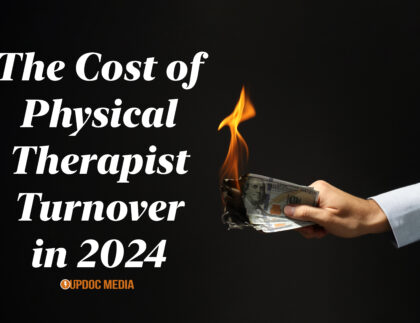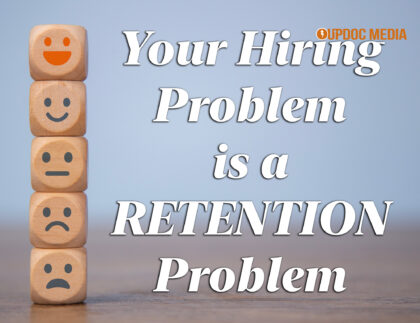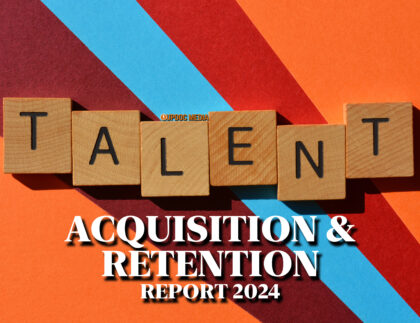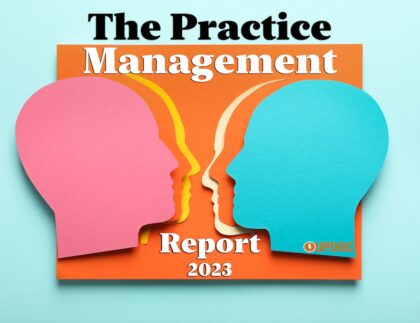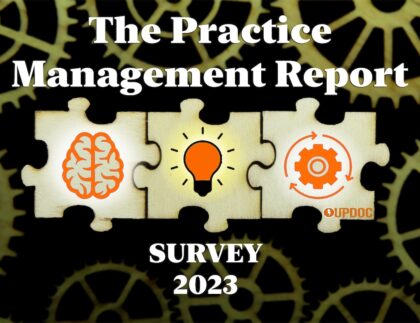

If you don’t have a truly precise plan for attracting and keeping top talent, you need to start looking into immediately. Consider these facts of cost, alone:
- Most companies in the United States experience an average turnover of 15%.
- The average cost of a floor level employee replacement is 30% of the annual salary.
- The cost to replace a supervisor or floor manager escalates upwards to 80% of annual salary.
- Middle and senior management roles commonly require over 250% of annual salary in cost to replace.
- The cost to replace executive level employees are so astronomically high that there is no consistent number to cite.
By the numbers: Companies conservatively spend $15,000 per lost employee in replacement costs. Companies also spend well over $30-50k per lost manager in replacement cost. Moreover, employees have plenty of incentive to leave you — to the tune of making 50% more with someone else. And, if that isn’t enough to grab your attention, as the job market evolves through this next phase of demographics, an entirely new culture will represent the overwhelming majority of the workforce who won’t blink an eye to quit in a few short months for a litany of reasons.
Today’s Business Renovations case study is….!
Attracting and Keeping Top Talent
Presently in 2015, Generation X and Generation Y (Millennials) each represent a third of the workforce. That’s right, these two generations comprise nearly 70% of the present day workforce. By 2020, millennials will surpass any generation by representing 50% of the global workforce. Regardless of your inclinations about this trend, the fact is as a business, you need to have very precise strategy of attracting and keeping top talent or face the costs of replacing them. And, not only replacing them… replacing them with lesser talent.
While the strategies and tactics here are different for every industry, every segment of that industry, and even for location, the fundamental principles remain the same. We are hiring people. Therefore, the approach must be truly person-centric, relatable, and authentic.
Thus, begins today’s three part case study.
Case Study Part 1: The underpaid.
A young new graduate with a masters has entered the workforce. Having applied to many jobs, she finally lands an interview with a promising company. The interview goes very well, she likes the team, she likes the manager, and she has no reason to say, “No.” A 24 hour period goes by where the manager comes back with the job offer itself. To her surprise, she is offered a rate which is 15% below market value for her credentials and level of education. With no other prospects, she accepts this job. In less than 6 months, she informs the manager out of professional courtesy that she is picking up work elsewhere. Within 9 months, she leaves the company — costing the business more time and money than if she were to have been paid equitably.
Case Study Part 2: The undervalued.
An employee of 2 years has repeated demonstrated his ability to perform, above and beyond the call of duty. His achievements in this short time has garnered much attention from both his colleagues as well as other managers. In fact, he has been receiving unsolicited offers to transfer to other departments from other managers. Out of professionalism, his loyalty remains to his hiring manager. However, when the opportunity for a promotion presents itself, he is given ambiguous reasons and no formal declination of the job itself. When approached for an esteemed committee level opportunity, he is again given no concrete reason nor formal declination. A year later, he quits, taking a management position with another company who has clearly appreciated the value he brings. Not only will the original hiring manager have to replace this employee, the manager will also have to some how restore all the strategic relationships established by the now former employee — costs and losses which cannot be measured.
Case Study Part 3: The unrecognized.
An employee who is regarded by both colleagues and coworkers from other business units has been gaining more and more lateral recognition. She has been working extra hours, picking up more projects, and established some very key relationships which has benefited the department immensely. After being invited to a super-committee, responsible for system wide changes and improvements in a 10,000+ employee company, she feels like she is at the top of her game. When the implementation phase rolls out, she is knee deep in the mess and at the front lines on a daily basis. The initial test phase passes and is approved for a system wide roll out. The success is so overwhelming that the super-committee is even recognized by an award in excellence. However, she is neither named, recognized, nor noted to be a part of this initiative despite having an instrumental hand in it. Discouraged and disengaged, she find no further reason to continue working as hard as she has been. There are other coworkers flying well below the radar who do less than half of the work she gets done. She is neither recognized for her efforts nor her achievements; neither are the lack luster colleagues given any corrective coaching for being sub-par. Depressed by this turn of events, her morale is broken — she now works as hard… nor not as hard, as anyone else, with no incentive to do otherwise.
Sadly, all three of these cases are true stories.
For the underpaid, a little bump in the form of a raise, promotion in nomenclature, or a boost in fringe benefits would have been well worth the investment. Even paying fair wage would have saved the cost of 15% the annual salary, which was considerable being that this employee entered at the masters’ level. Moreover, the backlash of the underpaid employee leaving caused coworkers to question the productivity of certain incumbents — causing another employee to be let go for reasons of performance.
For the undervalued, he took his strategic relationships with him to his new place of work. Establishing a strong network which began to chip away at the market share of his former employer. The replacement who was hired in succession was far less productive than he was. Additionally, the replacement was not welcome, causing all sorts of political strife in the workplace.
The unrecognized employee continues to identify problems which can be fixed. However, she neither offers solutions nor offers to take part in extracurricular projects given that having tried and tired again, she remains unrecognized. When encouraged by many of her coworkers to apply for a promotion, management passes her for a coworker known to be less productive and less well liked than she. She remains unrecognized and with no incentive to excel as she once had. She is currently seeking new employment with a company that will recognize excellence and correct mediocrity.
So, what strategies can be implemented to fix this problems? How do we actually attract and keep top talent?
- Pay Equitably. Everyone knows that the new grad gets low balled and underpaid. Don’t do this. Eventually, everyone is going to be part of this “new grad” culture and employees will leave you en masse for fair wages — or — they will openly denounce your company, leaving you in a debt of human capital, filled by very expensive temporary staff.
- Offer Leadership Tracks. Top Talent tends to be ambitious go-getters who aren’t afraid to work harder and longer than any of your current employees. Rather than bounce a future top executive to another company, openly make opportunities available; coach these prodigies and make them even more valuable to your businesses.
- Foster a Culture of Communication. Believe it or not, millennial talent is excellent at communication. They just work with different frequencies. Learn these wavelengths. And, more importantly, create a system of communication where mistakes are not punished but made a learning experience — fostering a culture of service recovery within the company itself.
- Create a Culture of Excellence. Make high octane performance the new normal at your company. No longer be satisfied with industry standards. The new standard is being a leader in every way. Top Talent gushes at the prospect that good isn’t good enough and that better could be best.
- Transition to Value Based Compensation. If your industry and business is compatible with value based compensation, create opportunities for employees to switch to this new system. Employees who are high performers will naturally gravitate towards this model. Those that are less than average will shy away. Top Talent that is emerging in the workforce will clearly notice and will fight tooth an nail for a chance to join you.
- Be Transparent About Pay Grades. Be abundantly clear and available to explain how much people get paid and why. How are promotions determined? How are pay grades formulated? What is the market average and can your business do better? Top Talent doesn’t want to fuss with a convoluted back and forth about pay. They know what they are worth, and quite honestly, so do you. If you wish to attract top talent and keep them, you will need open about this topic. If your company can’t afford to pay, just be honest about why. They’ll understand and respect you for it.
- Openly Recognize Performance. There is nothing worse that Top Talent being nearly reprimanded for making experienced incumbents feel bad, only because they are outperforming the senior ranked employees. This goes directly against a culture of excellence, and what is worse, it rewards mediocrity. Therefore, when high performance is delivered, quickly and openly celebrate the excellence.
- Swiftly Manage Negativity. It is common for incumbents to lash out with backstabbing, jealousy, sabotage, and mediocrity. If you hope to wish and keep top talent in your ranks, you must manage such negativity with a swift iron fist. If there is jealousy, redirect this as a par for performance. If there is mediocrity, make clear the standards of performance — if mediocrity remains, it may be time to performance out certain employees, regardless of their seniority.
- Make Work Meaningful. Top Talent is attracted to work which is meaningful, impactful, and significant. Doing things out of habit, just because they have been traditionally done, or for no reason at all is a great way to disengage top talent and drive them to leave your company. And, for those looking for jobs, it is a clear reason not to approach you at all.
- Be An Advocate of Employee Growth. Top Talent is always looking for a way to continue in excellence — to grow. Empower this drive and desire by making available opportunities to be involved in extracurricular projects, to receive advanced training and credentials, and to participate in the formulation of innovative solutions to the problems plaguing your business. This is a win for everyone.
Attracting and Keeping Top Talent is a game of marketing for human capital.
To do this right, you must integrate all these areas into your compensation portfolio, your company’s brand image, and your organizational culture. Many times, this requires big changes in the way your business runs its human resource department. Often, it requires a revolutionary corporate culture change.
If this case rings true and you feel your business could benefit from a clinically precise strategy to attract and keep top talent, please explore the UpDoc Media Business Optimizer Intensive!



